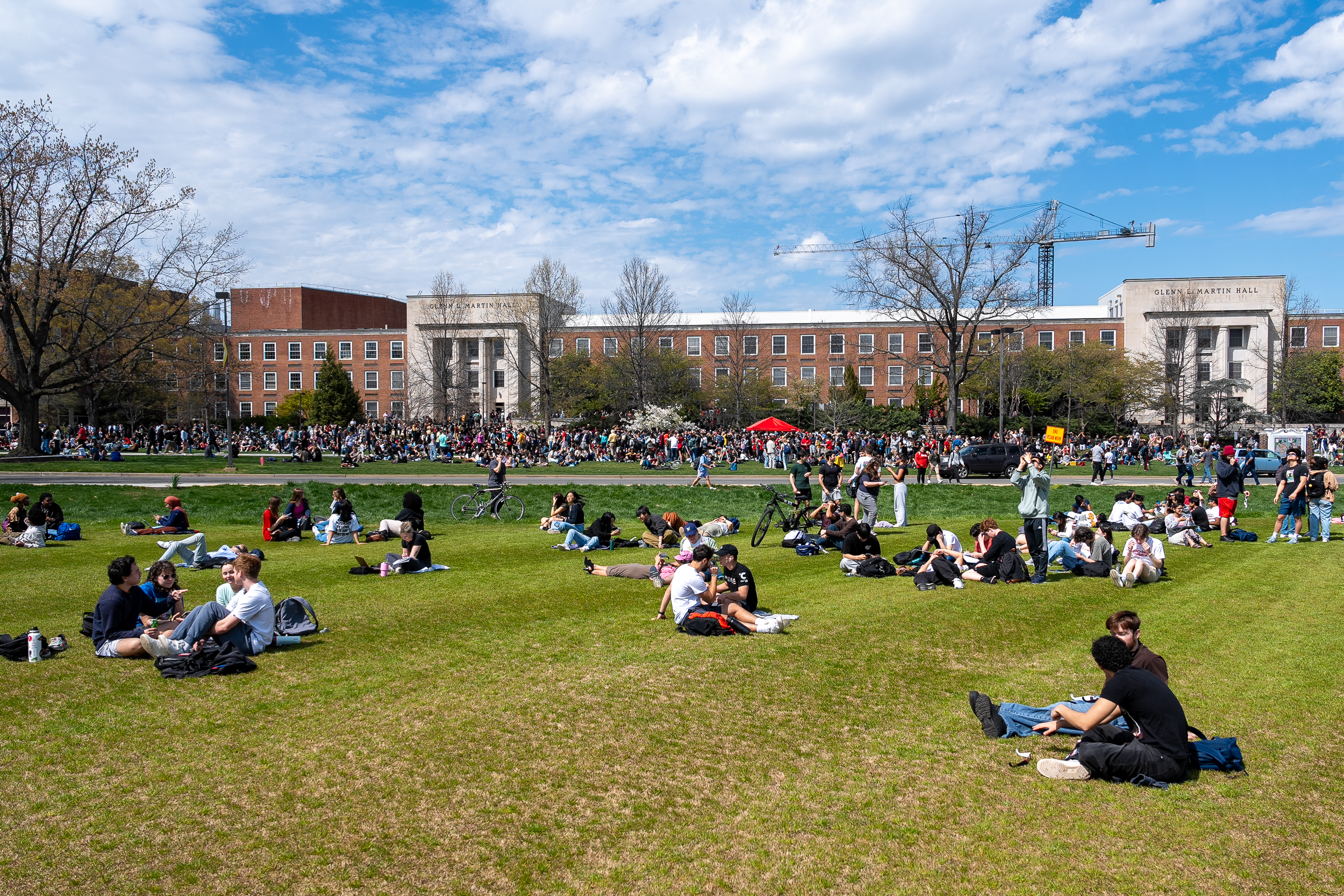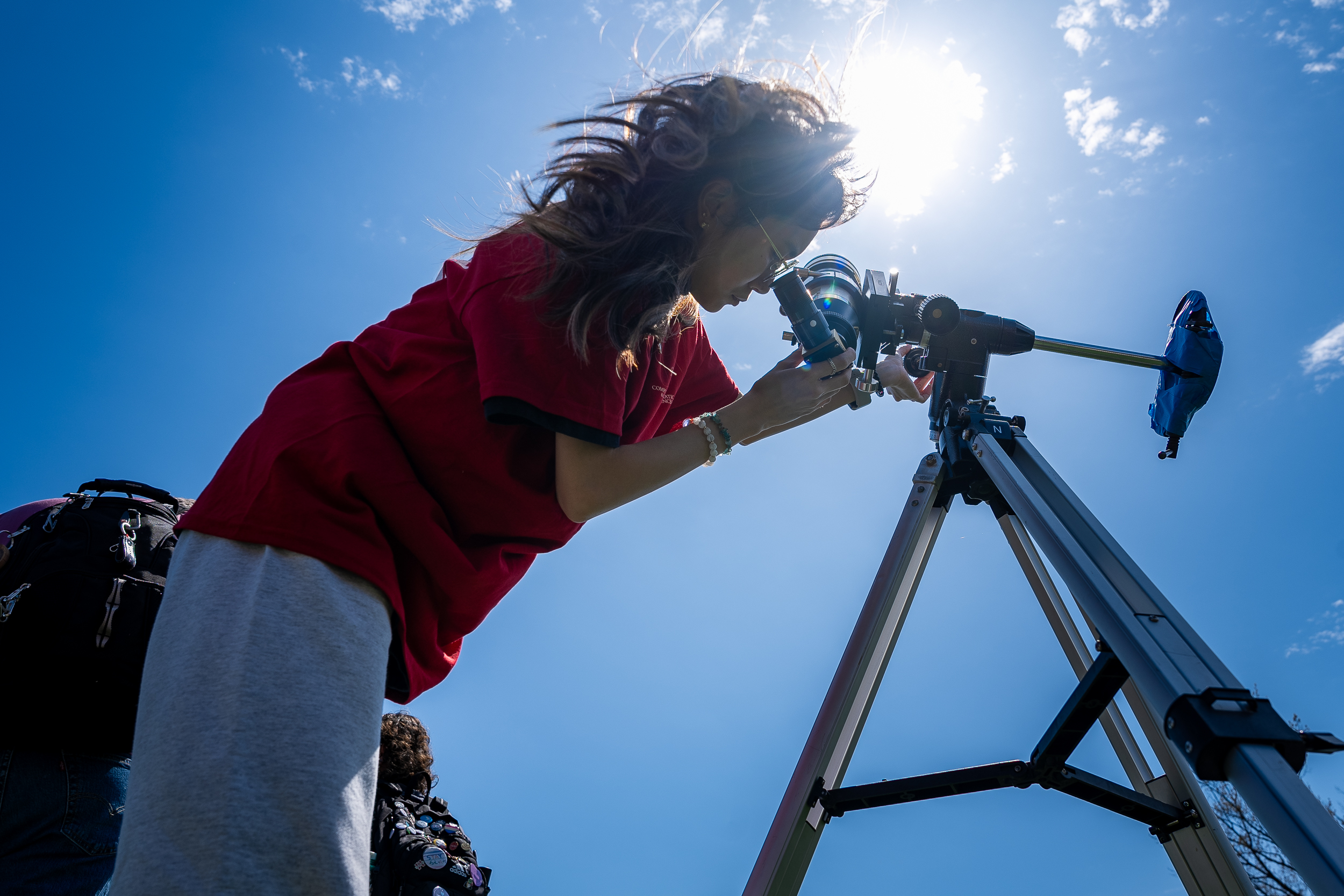Thousands of UMD Community Members Join Solar Eclipse Viewing Party
The College of Computer, Mathematical, and Natural Sciences hosted a Solar Eclipse Viewing Party with the Astronomy Department and the Space Sciences Outreach Cooperative.

Over 5,000 members of the University of Maryland community gathered for a solar eclipse viewing party hosted by the College of Computer, Mathematical, and Natural Sciences, the Department of Astronomy and the Space Sciences Outreach Cooperative. Solar eclipse glasses and telescopes were provided so that attendees could safely observe the sun.

Hundreds of miles from the path of totality that stretched from Texas to Maine, the moon’s journey across the sun’s surface began at 2:04 p.m., according to the Naval Observatory’s solar eclipse computer.

Dean Amitabh Varshney viewed the solar eclipse with attendees and was excited to see such a significant turnout.
“I’m so pleased that we were able to afford this really amazing view of the functioning of the solar system to all the students,” Dean Amitabh Varshney told a reporter from The Diamondback.

The University of Maryland Astronomy Observatory provided telescopes for the viewing party to provide attendees with a closer view of the solar eclipse.

Students laid down on the lawn in front of Martin Hall for the full solar eclipse experience. For most of the students gathered outdoors, this was the most significant eclipse of their lifetimes.

By 3:20, the eclipse had covered 87.6% of the sun. Students got away from some of the crowds to view the solar eclipse in front of the M Circle.







